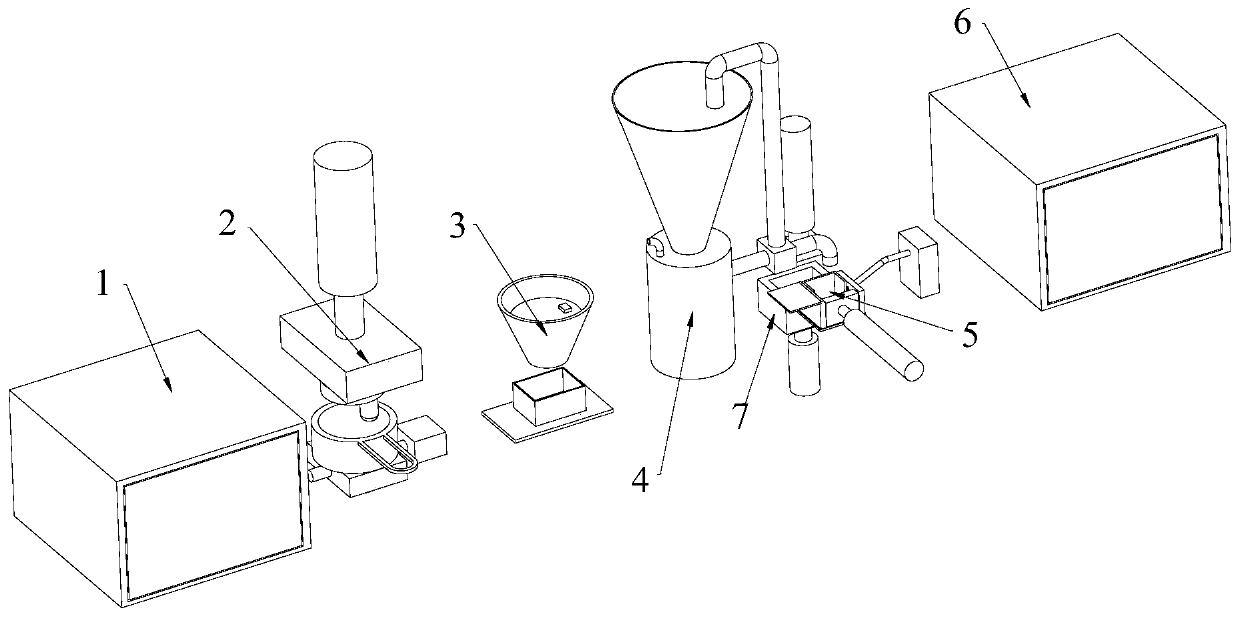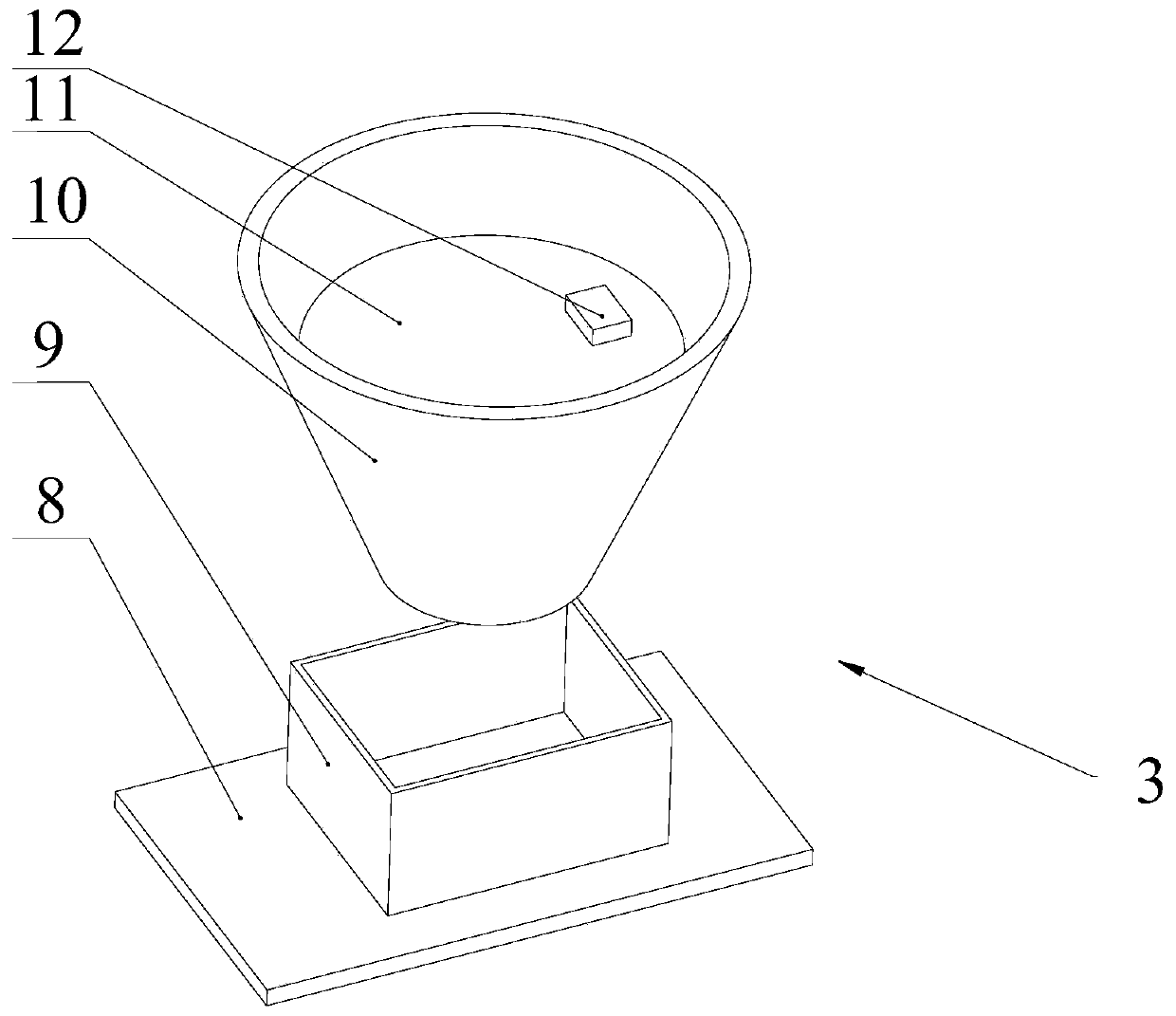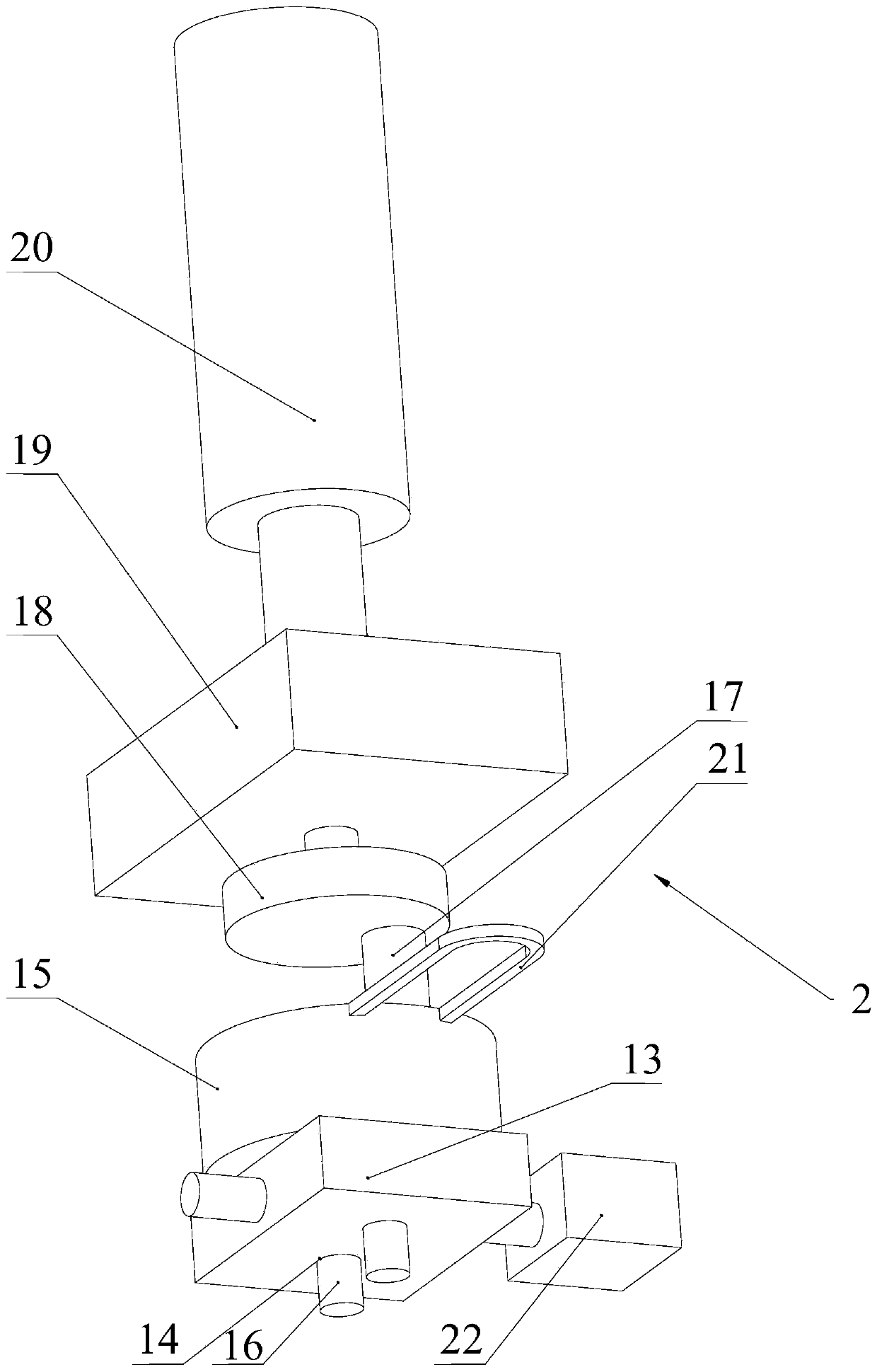Borate glass ceramic low-temperature solidification method of silver-coated silica gel
A technology of borate glass and curing method, which is applied in glass furnace equipment, glass manufacturing equipment, manufacturing tools and other directions, can solve the problems of inability to handle radioactive iodine for a long time, and the deformation of the cured body affects stability, and achieves good industrial application prospects , Easy to take out, good grinding effect
- Summary
- Abstract
- Description
- Claims
- Application Information
AI Technical Summary
Problems solved by technology
Method used
Image
Examples
Embodiment 1
[0082] In this example, the common iodine-127 is used to simulate the radionuclide iodine-129. A low-temperature curing method for borate glass ceramics coated with silver silica gel, comprising the following steps:
[0083] (1) mixing and grinding silica gel particles and AgI to obtain iodine-containing silver-coated silica gel particles, and filtering through a filter to obtain iodine-containing silver-coated silica gel particles with a maximum outer diameter less than or equal to 200 μm;
[0084] (2) Mix boron oxide, bismuth oxide and zinc oxide into a high-temperature muffle furnace or microwave sintering furnace, sinter at 1000°C to 2000°C to obtain glass ceramics, and grind the glass ceramics to obtain borate glass ceramic powder . In the borate glass ceramic powder, by mass percentage, in this embodiment, boron oxide is 60%, bismuth oxide is 28%, and zinc oxide is 12%. In actual use, boron oxide is 40% to 70%, bismuth oxide is 22% to 48%, and zinc oxide is 8% to 12%. ...
Embodiment 2
[0091] In this example, the common iodine-127 is also used to simulate the radionuclide iodine-129. A low-temperature curing method for borate glass ceramics coated with silver silica gel, comprising the following steps:
[0092] (1) mixing and grinding silica gel particles and AgI to obtain iodine-containing silver-coated silica gel particles, and filtering through a filter to obtain iodine-containing silver-coated silica gel particles with a maximum outer diameter less than or equal to 200 μm;
[0093] (2) Mix boron oxide, bismuth oxide and zinc oxide into a high-temperature muffle furnace or microwave sintering furnace, sinter at 1000°C to 2000°C to obtain glass ceramics, and grind the glass ceramics to obtain borate glass ceramic powder . In the borate glass ceramic powder, by mass percentage, in this embodiment, boron oxide is 50%, bismuth oxide is 40%, and zinc oxide is 10%.
[0094] (3) Mix iodine-containing silver-coated silica gel particles with borate glass-ceramic...
Embodiment 3
[0098] Such as figure 1 As shown, this embodiment discloses a curing device for implementing the method of the present application, and the curing device includes:
[0099] The first sintering device 1 is used for sintering boron oxide, bismuth oxide and zinc oxide to obtain borate glass ceramics;
[0100] Glass-ceramic grinding device 2, for grinding borate glass-ceramic into borate glass-ceramic powder;
[0101] Silver-coated silica gel particle filter mechanism 3;
[0102] Colloid mill 4, used for mixing and grinding silver-coated silica gel particles and borate glass ceramic powder;
[0103] Drying device 5, is used for receiving the wet mixture from colloid mill 4, and to mixture drying, obtains dry mixture;
[0104] The second sintering device 6 is used for sintering the dried mixture.
[0105] The first sintering device 1 and the second sintering device 6 can be equipment such as high temperature muffle furnace or microwave sintering furnace.
[0106] Such as figu...
PUM
| Property | Measurement | Unit |
|---|---|---|
| Bulk density | aaaaa | aaaaa |
| Bulk density | aaaaa | aaaaa |
Abstract
Description
Claims
Application Information
 Login to View More
Login to View More - R&D
- Intellectual Property
- Life Sciences
- Materials
- Tech Scout
- Unparalleled Data Quality
- Higher Quality Content
- 60% Fewer Hallucinations
Browse by: Latest US Patents, China's latest patents, Technical Efficacy Thesaurus, Application Domain, Technology Topic, Popular Technical Reports.
© 2025 PatSnap. All rights reserved.Legal|Privacy policy|Modern Slavery Act Transparency Statement|Sitemap|About US| Contact US: help@patsnap.com



